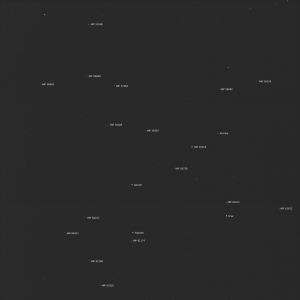

(Image by Tero Vesalainen on Shutterstock)
VIENNA — In today’s digital world, determining what information to trust online has become increasingly challenging. According to researchers, the total volume of false news remains relatively small—accounting for just 0.15% of all news consumption. Still, its impact on public discourse and social division continues to raise concerns. A new study published in the Journal of Quantitative Description: Digital Media examines one of the most prominent tools researchers use to identify untrustworthy news sources: NewsGuard.
Since its launch in 2019, NewsGuard has emerged as a widely used database for researchers studying online misinformation, with more than 12,000 websites having been evaluated by the company. The service employs professional journalists and editors who rate news sources based on nine journalistic criteria, generating trustworthiness scores from 0 to 100.
While initially focused on U.S. media outlets, NewsGuard has expanded to evaluate sources across multiple countries, including the United States, United Kingdom, Germany, France, Italy, Canada, Austria, Australia, and New Zealand.
A team of researchers led by Jula Luehring at the University of Vienna and the Complexity Science Hub conducted an extensive analysis of NewsGuard’s database from 2019 to 2024, examining how its ratings have evolved over time and how effectively it serves as a tool for studying misinformation across different countries. Their findings reveal both NewsGuard’s reliability and the potential pitfalls of oversimplifying its nuanced ratings system.
One of the study’s most striking findings concerns U.S.-based news sources, which consistently received lower trustworthiness scores compared to outlets from other nations. This pattern persisted across NewsGuard’s entire rating history, suggesting fundamental differences in journalistic standards and practices between American media and their international counterparts.


“Smaller (hyper-)partisan sources tend to lack editorial practices and transparency measures. Since these are key criteria for NewsGuard, judging based on NewsGuard criteria results in an objectively lower overall trustworthiness,” Luehring explains in a statement.
The research validates earlier findings from a 2023 study published in PNAS Nexus by Lin et al., which demonstrated strong alignment between NewsGuard’s ratings and those of other fact-checking organizations. The new study found that NewsGuard’s ratings have remained relatively stable since 2022, particularly for sources in the United States, France, Italy, Germany, and Canada. When changes in ratings did occur, they were often due to updates in transparency measures or editorial policies rather than dramatic shifts in content quality.
Another intriguing finding relates to political orientation. While only about a third of sources are labeled for political leaning, right-leaning outlets tend to receive lower trustworthiness scores than left-leaning ones. The average score for right-leaning sources was 26.4 out of 100, compared to 60.6 for left-leaning sources. However, this pattern should be interpreted cautiously due to the limited number of politically labeled sources
“It seems unlikely that NewsGuard has an inherent bias against conservative sources, both in selecting and giving them lower ratings,” suggests Luehring. “Instead, the U.S. media system is flooded with right-wing sources that tend to not adhere to professional editorial practices.”


The researchers discovered that untrustworthy sources aren’t confined to fringe topics or conspiracy theories. In fact, many low-rated outlets cover mainstream topics like political news, local news, and health information. This finding challenges the common assumption that unreliable information is primarily limited to extreme or sensational content.
NewsGuard’s selection process relies heavily on web traffic data, ensuring comprehensive coverage of widely-read sources. “We manually checked sources in the US, UK, and Germany, and found that the database misses almost no news sites with substantial traffic. The sites it does miss are not systematically biased towards any political ideology,” Luehring explains.
A crucial caution emerged from the research regarding how NewsGuard’s ratings are used in academic studies. The researchers found that using a simple binary classification of “trustworthy” versus “untrustworthy” based on a cutoff score of 60 can lead to significant variations in research results over time. They strongly recommend using NewsGuard’s full 100-point scale to capture the nuanced reality of source reliability.
“Tools to measure the trustworthiness of sources—like the NewsGuard database—are therefore crucial to quantify the spread of untrustworthy information in online environments,” adds co-author Jana Lasser, a professor at the University of Graz and associate faculty member at CSH. “However, researchers must use these tools thoughtfully to avoid oversimplifying complex media landscapes.”
Paper Summary
Methodology
The research team analyzed NewsGuard’s database from 2019 to 2024, examining ratings for over 12,000 news sources across multiple countries. They tracked changes in trustworthiness scores over time, evaluated the stability of ratings, and assessed how comprehensively the database covers different countries’ media landscapes. The researchers also conducted manual validation of political orientation labels for German-language sources and compared NewsGuard’s coverage with other existing source rating systems.
Results
NewsGuard’s database has grown from 2,375 sources in 2019 to 12,288 in 2024. About 60% of rated sources score above 60 points, considered at least “credible with exceptions.” U.S. sources averaged lower scores (56.8) compared to other countries like Canada (87.7) and Great Britain (78.5). The study found ratings typically remain stable, with major changes occurring in only about 20% of updates.
Limitations
The study acknowledges several constraints, including limited comparable datasets for countries outside the U.S., UK, and Germany. The absence of data from non-Western countries represents a significant gap in understanding misinformation globally. Additionally, the researchers could not fully assess potential biases in domain selection or independently verify the reliability of ratings across all contexts.
Discussion and Takeaways
The findings suggest NewsGuard provides a valuable but imperfect tool for studying online misinformation. Researchers should avoid using binary classifications and instead leverage the nuanced 100-point scale. The study also highlights the importance of considering country-specific contexts and the need for more comprehensive coverage of non-Western media environments.
Funding and Disclosures
The research was supported by the Vienna Science and Technology Fund, the Austrian Science Fund, and the European Research Council under the European Union’s Horizon Europe program. The authors declared no conflicts of interest.
Publication Information
Published in the Journal of Quantitative Description: Digital Media, Volume 5, 2025, pages 1-53. DOI: 10.51685/jqd.2025.003. The paper is available under a Creative Commons Attribution-NonCommercial-NoDerivatives 4.0 International Public License.








